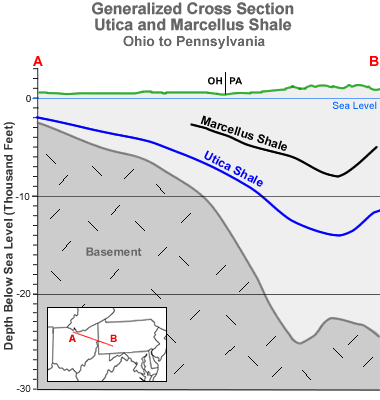Exercise 5: Data Downloading, Interoperability, and Working with Projections in Python
Goal:
The purpose of this lab was to become familiar with a number of different things. We were to become familiar with the acquisition of data from a multitude of sources. In this lab we acquired data from the USGS, NRCS, USDA, and Trempealeau County. After all of our data was acquired we had to know how to join the necessary tables so that the data was more usable. Then we had to understand how to write a Python code that allow us to project, clip, and load all of the data into the Trempealeau County geodatabase. All of this will continue to build upon the groundwork laid in Exercise 1, as we now have much of the data necessary to begin our analysis on Frac Sand Mining in Trempealeau County in West-Central Wisconsin.
Methods:
Our first step was to acquire the data necessary to begin our analysis. We downloaded data from the US Department of Transportation for railroad lines, from the USGS National Map Viewer for national land cover data and elevation data, from the USDA Geospatial Gateway for cropland data for the state of Wisconsin, from Trempealeau County for their most current working county geodatabase, and finally from the NRCS to download SSURGO data that had the county soil data. The SSURGO data needed to be joined with a number of other tables to ensure that it had all the data necessary to be beneficial and understandable for our project. In order to accomplish this, a SSURGO database was first brought into Microsoft Access A component table was imported from the downloaded soils geodatabase. The data was assigned the necessary parameters and then it was brought into ArcMap. In ArcMap we are able to conduct the necessary joins that bring this data together into one usable feature. Drainage Index and Productivity Index tables were acquired from the SSURGO website and brought into the soils feature as well. The last step for this first section of the project was to bring in the railroad feature class and clip it to the Trempealeau County boundary.
This next portion of the project was write a script to project, clip, and load all of the data acquired previously into the Trempealeau County Geodatabase. The workflow for this script has been provided in my blog "GIS II: Python Scripting." Figures 1, 2, and 3 are maps derived from the scripting.
NRCS Soil Survey: http://websoilsurvey.sc.egov.usda.gov/App/HomePage.htm
 |
| Figure 1: This map shows the Digital Elevation Model (DEM) clipped to fit the Trempealeau County boundary. |
 |
| Figure 2: This map shows the National Land Cover Data (NLCD) Land Use Designations clipped to fit the Trempealeau County boundary. |
 |
| Figure 3: This map shows the National Agricultural Statistics Survey (NASS) Cropland Designation clipped to fit the Trempealeau County boundary. |
A large component of this lab was to better understand interoperability and data accuracy. Below is a table (Table 1) that highlights what was able to be determined to assist in explaining the accuracy of the data. Some of the numbers were determined based on scale, however the rest was searched for in the provided metadata. If nothing was found for the particular cell then the designation "none" was used.
 |
| Table 1: This table shows what data was able to be acquire or derived from pre-existing metadata. |
Conclusion:
This was a very frustrating lab. However, that I feel was a large objective of this exercise. Unfortunately, data is not available in a perfect, usable format every time. Data from different organizations, with different parameters, and with missing information are very common to come across when attempting to acquire data. The ability to understand the layout of this data, the integrity of the data, and the ways to make the data fit the needs of the project are very necessary skills.
Sites for Data Acquisition:
The data for this exercise was acquired from the following websites:
United States Department of Transportation: http://www.rita.dot.gov/bts/sites/rita.dot.gov.bts/files/publications/national_transportation_atlas_database/index.html
USGS National Map Viewer: http://nationalmap.gov/viewers.html
USGS National Agricultural Statistics Survey: http://datagateway.nrcs.usda.gov/
Trempealeau County: http://www.tremplocounty.com/landrecords/NRCS Soil Survey: http://websoilsurvey.sc.egov.usda.gov/App/HomePage.htm







